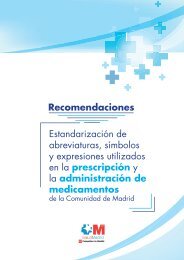lKd7nD
lKd7nD
lKd7nD
Create successful ePaper yourself
Turn your PDF publications into a flip-book with our unique Google optimized e-Paper software.
By the Light of Translation<br />
Natasha Wimmer<br />
The second section of Roberto<br />
Bolaño’s The Savage Detectives<br />
ends with a conversation<br />
between Amadeo Salvatierra,<br />
an avant-garde poet of<br />
advanced years, and two<br />
young poets. After a long<br />
night of talk over a bottle of<br />
mezcal, Amadeo asks, “Boys,<br />
is it worth it Is it worth it Is<br />
it really worth it” and one of the poets mumbles “Simonel.” We<br />
don’t know exactly what Amadeo is asking, but we can presume<br />
that at some level he means: Is poetry worth it Is the pursuit<br />
of literature worth it Have our lives been worth anything<br />
Clearly, much rests on the translation of “simonel,” which is an<br />
ambiguous Mexico City slang term. Earlier in the novel, another<br />
character asks plaintively “If simón is slang for yes and nel means<br />
no, then what does simonel mean” This sole prior mention<br />
seems to indicate that “simonel” is intentionally ambiguous, and<br />
that the simple solution to the problem is to translate “simonel”<br />
as “simonel,” since the reader has already been given enough<br />
information to draw his own conclusions. But when I inquired, at<br />
least one of my informants said that “simonel” was a mix of yes<br />
and no, but that it really meant yes. Was Bolaño playing with yes<br />
and no only to come down ultimately on the side of yes Or was it<br />
I don’t know shaded with yes Or simply I don’t know<br />
Translating is a kind of writing, of course, but it’s also a<br />
kind of reading: a very, very slow kind of reading—possibly the<br />
slowest kind of reading in the world. First of all, you read the<br />
book (probably: Gregory Rabassa, one of the great translators<br />
of the 20th century, claimed never to read a book all the way<br />
through before he translated it). Then you sit down and face<br />
the first sentence. You read it. You come up with a preliminary<br />
approximation of meaning (this may be instantaneous and<br />
unconscious or slow and laborious). You set out to transfer that<br />
meaning into English. You tack away from the Spanish at one<br />
angle. You tack away at another. You feel the pull of the Spanish<br />
on the English. You break free from the Spanish. You check the<br />
Spanish again: the English is true but it stands on its own, an<br />
independent refraction of the original.<br />
22<br />
National Endowment for the Arts



